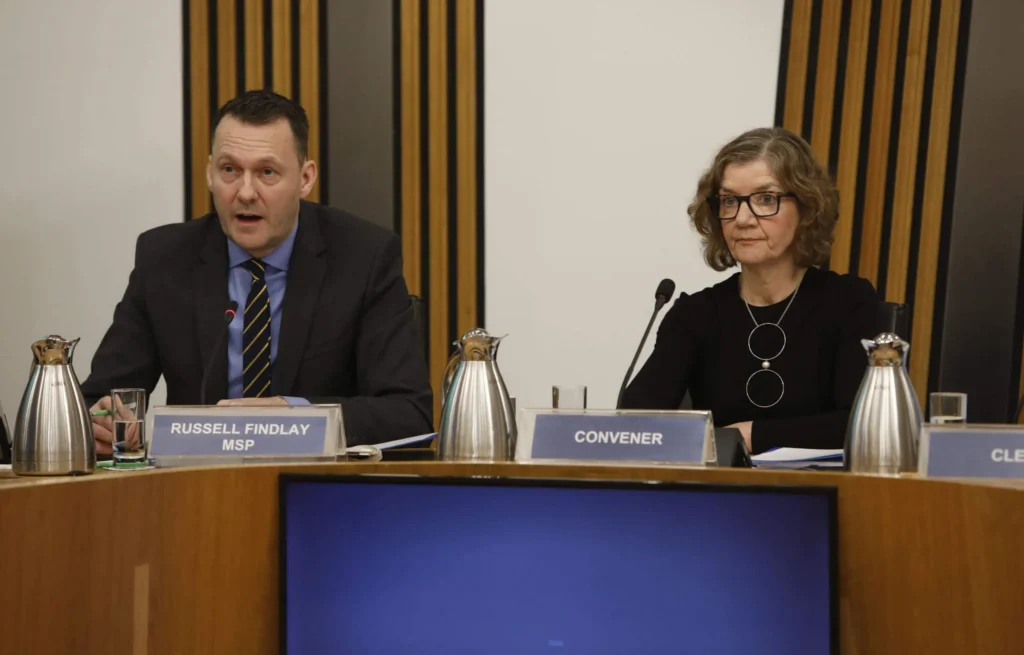A Defining Moment for SNP Leadership
SNP MSP Audrey Nicoll to step down in 2026, marking a significant shift in Scottish politics and opening the door for Stephen Flynn, the current SNP Westminster leader, to potentially make his move to Holyrood. Nicoll’s departure from her Aberdeen South and North Kincardine seat is part of a broader wave of resignations within the SNP, signaling internal changes and raising questions about the party’s future direction.
With several senior MSPs stepping away from politics, including former First Minister Humza Yousaf, the SNP faces a crucial test in maintaining voter confidence and party stability ahead of the next election. Adding to this uncertainty, Nicola Sturgeon’s political future remains unclear, intensifying speculation about the SNP’s leadership and long-term strategy.
Amid these shifts, the party must also navigate growing ideological tensions. Some factions within the SNP push for a more assertive approach to achieving Scottish independence, while others advocate for a pragmatic and gradualist strategy. These divisions could play a critical role in shaping the party’s next chapter as it prepares for the 2026 Holyrood elections.
The Role of Stephen Flynn in SNP’s Future
Flynn, seen as a rising force within the party, has long been rumored to have ambitions for a more central role in Scottish politics. However, his potential transition from Westminster to Holyrood is complicated by changes in electoral rules, which now prevent sitting MPs from simultaneously holding a Scottish Parliament seat. If he does decide to run, he will need to step down as SNP Westminster leader, leaving a power vacuum in UK parliamentary representation for the party.
Flynn has previously expressed interest in shifting to Holyrood, but he has also faced criticism from within the SNP regarding his approach. Some believe his leadership in Westminster has strengthened the party’s standing at the UK level, while others argue his focus should be on domestic Scottish politics. Additionally, Flynn’s decision to delay an announcement regarding his candidacy has fueled speculation about internal discussions within the party regarding future leadership, policy direction, and the best strategy for securing votes in key constituencies.
Broader Implications for the SNP

The wider implications of this shift extend beyond party politics. The SNP has been facing growing pressure from opposition parties, fluctuating public support for Scottish independence, and internal challenges related to governance and policy direction. The 2026 election could mark a turning point in how the party positions itself moving forward.
Additionally, the wave of resignations from key SNP figures, including long-serving MSPs, raises questions about whether this transition period is a sign of party renewal or internal instability. Many veteran politicians leaving at once could create opportunities for fresh leadership but may also weaken the party’s institutional experience. The increasing public scrutiny of SNP policies, leadership changes, and governance decisions means that the party must work harder to maintain unity while presenting a strong, cohesive plan for the future.
Moreover, opposition parties such as Labour and the Conservatives are eager to capitalize on any signs of SNP instability, using the leadership transitions to strengthen their own positions ahead of the election. The success of the SNP in the upcoming elections may depend on how well it can reassure voters, retain trust, and communicate a compelling vision for Scotland’s future amid these shifts.
What This Means for Holyrood Elections
As the SNP navigates this transition, questions arise about Flynn’s next steps, the party’s long-term leadership strategy, and how these changes will impact Scotland’s political landscape. Will this moment mark a significant power shift within the SNP, or will it provide an opportunity for fresh leadership to emerge? Could Flynn’s potential candidacy strengthen or weaken the party’s standing in Holyrood?
The 2026 Holyrood elections will serve as a crucial test for the SNP’s ability to adapt to these internal shifts while maintaining voter confidence. With the opposition parties gaining ground, the SNP must ensure it presents a clear, stable, and progressive vision for Scotland’s future. Furthermore, the party’s stance on independence, economic growth, and social policies will be closely examined, as voters seek clarity on the direction of the SNP’s long-term strategy.
Beyond internal party dynamics, the shifting political landscape in Scotland will also impact SNP’s relationship with Westminster. The party’s ability to negotiate power, advocate for Scottish independence, and counter opposition narratives will all play a role in determining its electoral success.
As the leadership race unfolds and new candidates emerge, all eyes will be on how the SNP manages this period of transformation and whether it can maintain its dominance in Scottish politics in the years to come. The party’s ability to retain voter confidence and navigate these leadership shifts will ultimately shape the future of Scottish governance and the long-term viability of the independence movement.


